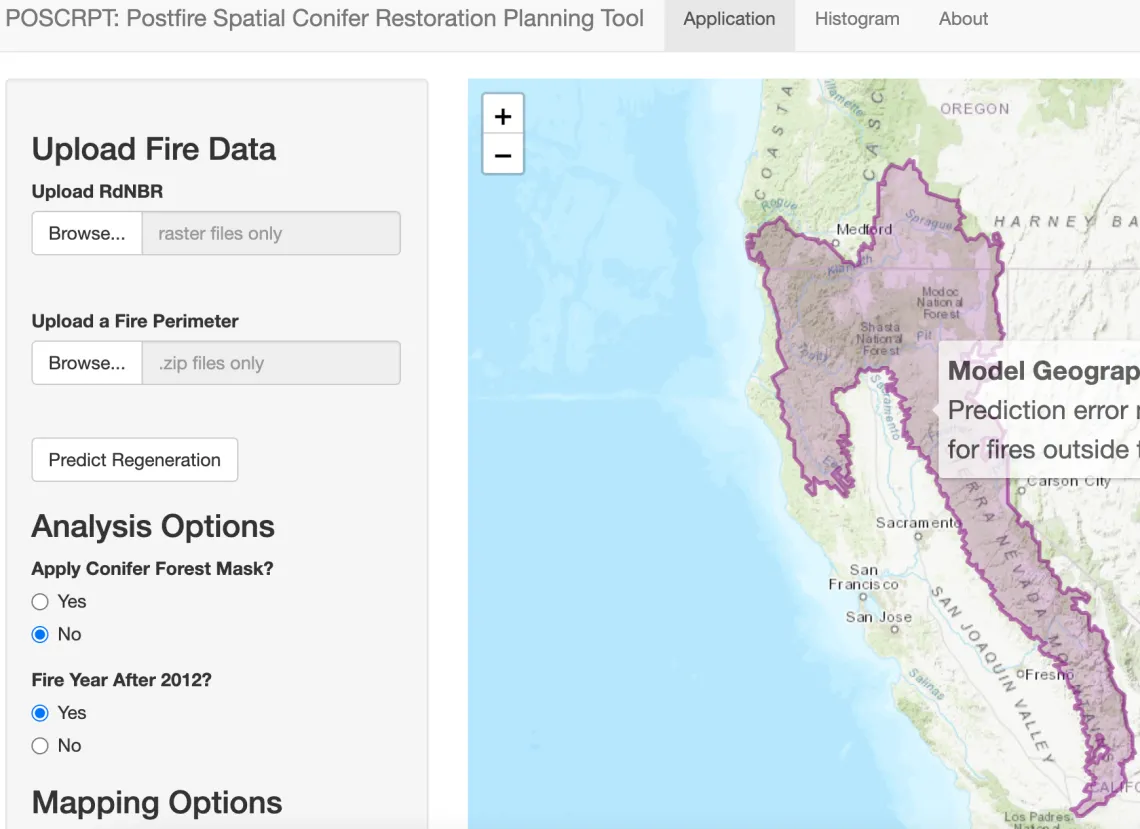SWCASC Researchers Create New Tool to Assist Managers in Rebuilding Forests After Fire

Newly published SW CASC funded research in Ecological Applications estimates postfire regeneration of conifers in low-elevation California forests, to help managers identify where artificial seeding is needed after large wildfires. Researchers incorporated climate data, topography, forest composition, and burn severity to model conifer regeneration, and found, among other things, that conifers are less likely to regenerate during droughts in low-to-moderate elevation forests.
As a part of the study, researchers also created a tool to aid managers in selecting which areas will be best for replanting after megafires. The Postfire Spatial Conifer Restoration Planning Tool (POSCRPT) predicts the probability of post-fire conifer regeneration for fire data supplied by the user. The tool is designed to simplify the process of predicting post-fire conifer regeneration under different precipitation and seed production scenarios.

